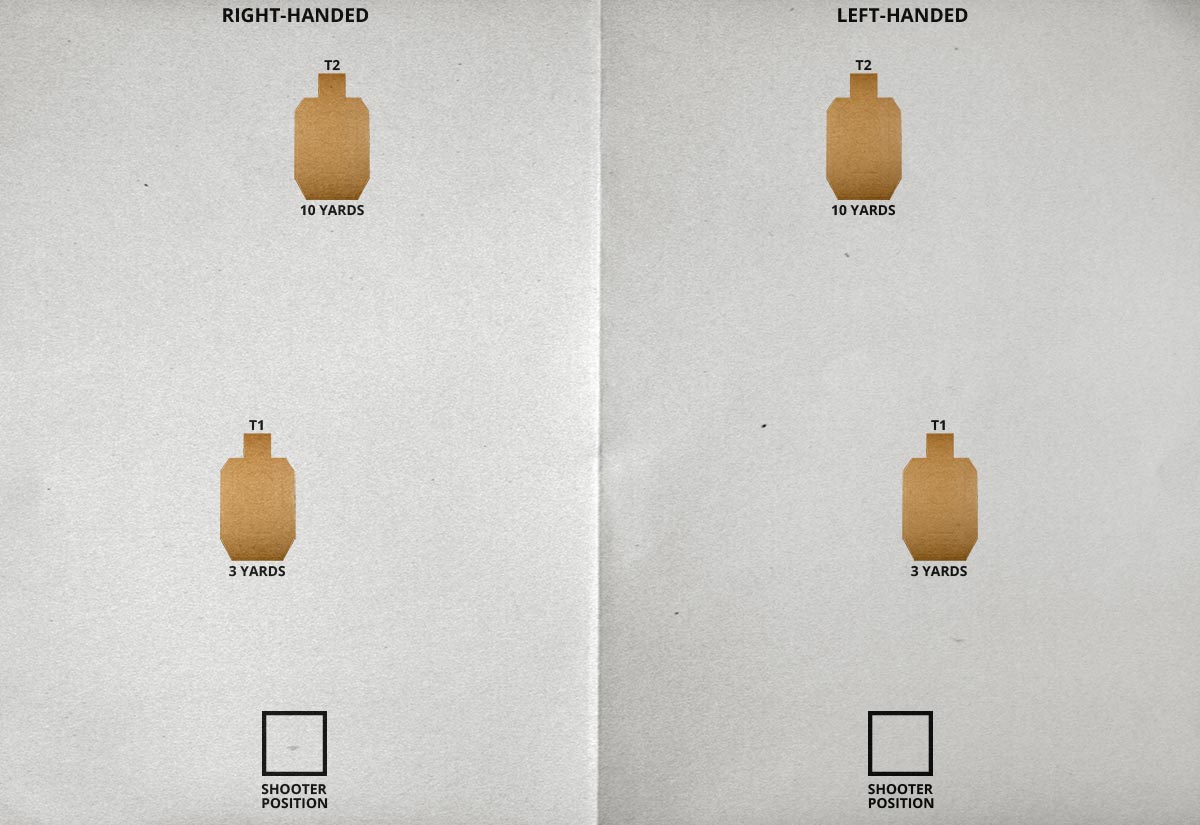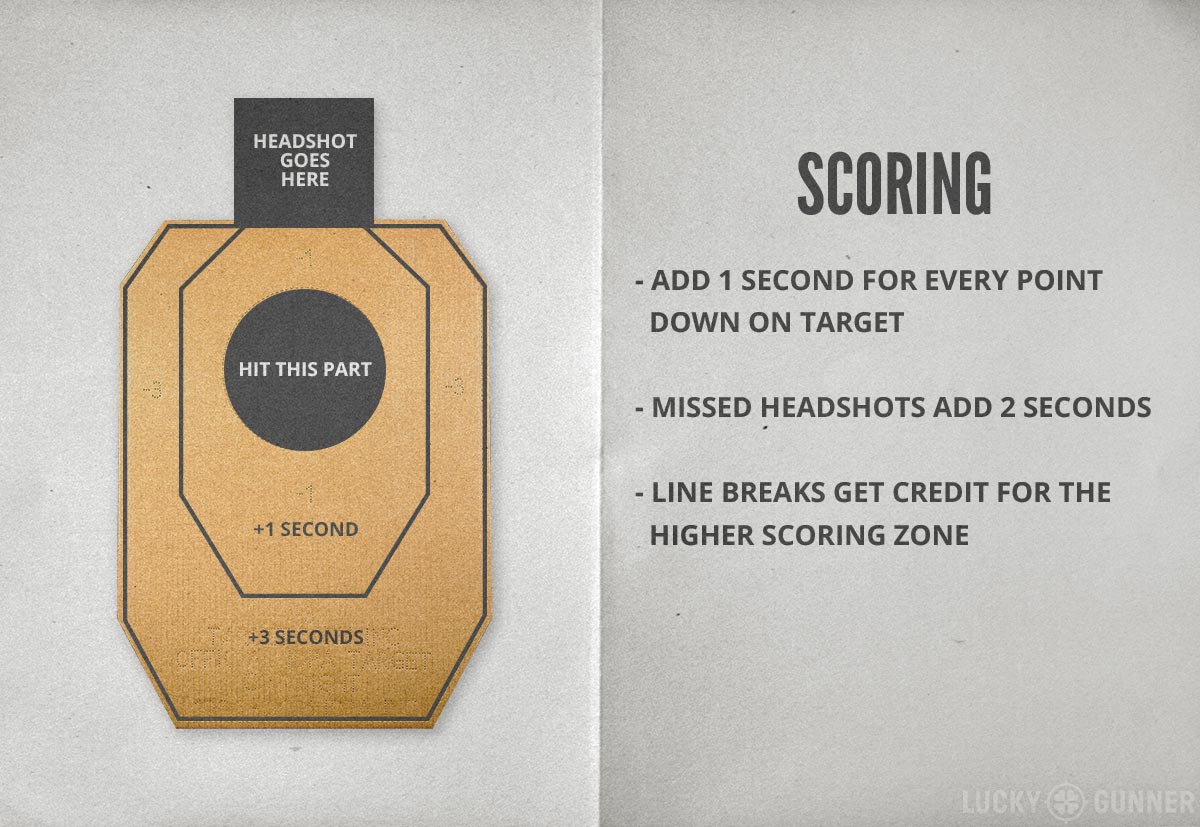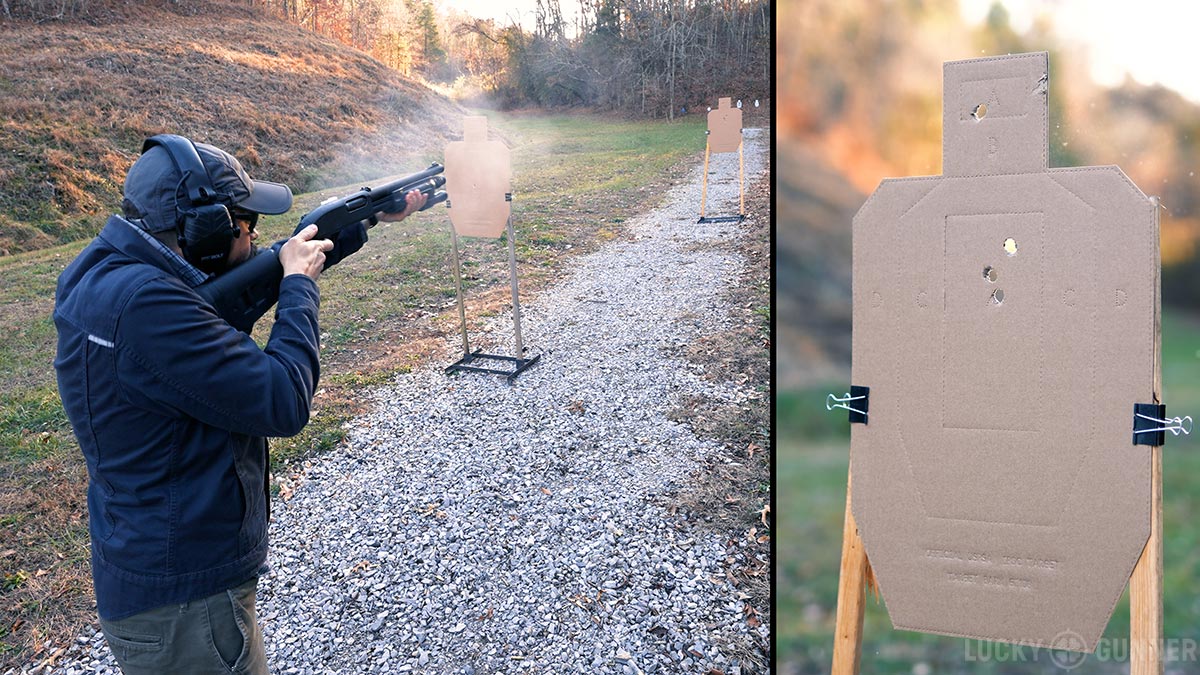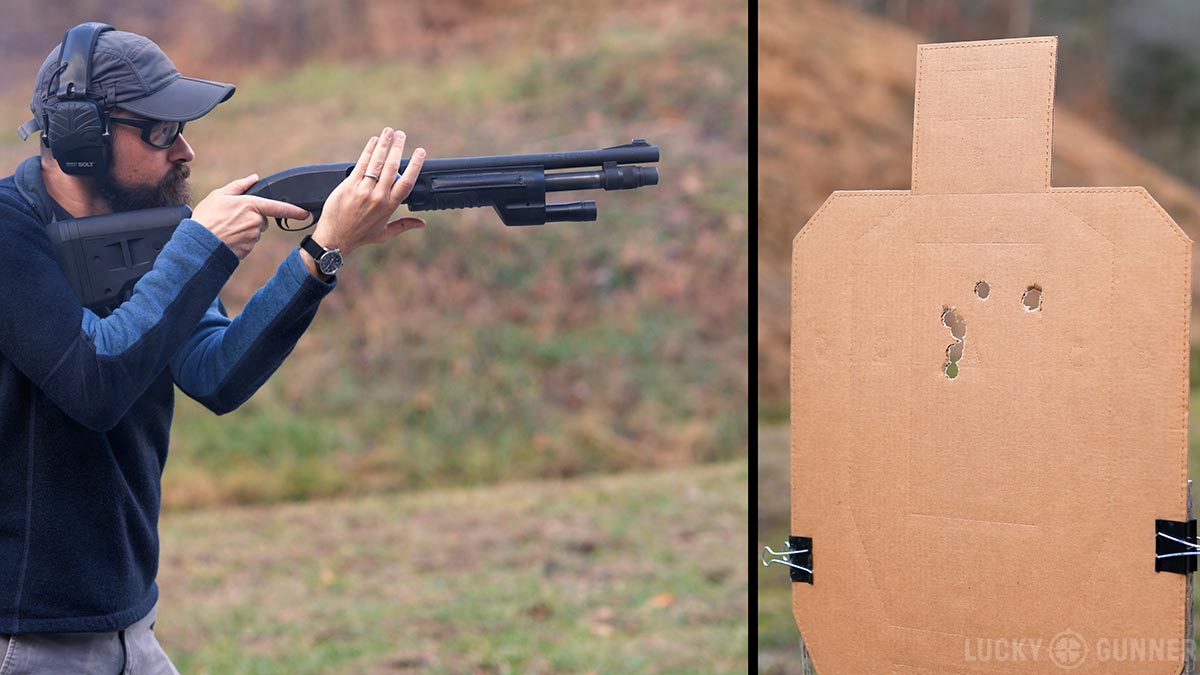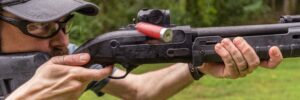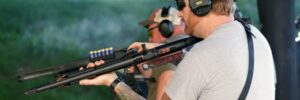The Shotgun Skills Gauge developed by Symtac Consulting is a quick way to test your shotgun chops at the range with only five shells. Today, we’re going over the course of fire, and offering a couple of tips for pulling off a coveted coin run.
Details are in the video below, or scroll on down to read the full transcript.
Hey everybody, I am Chris Baker from LuckyGunner.com. We almost got through the whole year without doing any shotgun videos. And that would be no good. So today, I’ve got a shotgun drill to share with you. This one is called the Symtac Skills Gauge. It’s from Symtac Consulting, which is the father-son duo of Rob and Matt “Double Aught” Haught. If you’re looking for some shotgun training, you won’t find anyone better.
Rob and Matt put together the Skills Gauge as a quick way to challenge and test students with as few rounds as possible. The concept is actually similar to the Lucky Gunner Home Defense Shotgun Skills Test I put together a couple of years ago, except theirs is even shorter. The LG test is four stages and 11 rounds. The Skills Gauge is just one stage and five rounds.
Course of Fire
To shoot the test, you’re going to need a shotgun with some way to store spare ammo on the gun – either a sidesaddle or a buttstock shell carrier. You will need five slugs. Load four slugs in the shotgun and the fifth slug on your ammo carrier.
The targets are two IDPA style silhouettes. If you’re right handed, place one target just to the left of center at three yards and another on the right at 10 yards. For lefties, flip that – close target on the right, far target on the left. Either way, you should be able to see both targets from the firing position and have a clear shot at either one without moving your feet.
On the start signal, fire one round at the body of the close target using the CQB (aka “short stock” position. More about that in a minute.) Then transition to a shoulder mount and fire three rounds at the body of the 10-yard target. You should have an empty gun. Chamber-load the last round from your ammo carrier and fire one head shot at the 10-yard target.
So it goes boom on the close target, mount, boom, boom, boom on the far target, reload, headshot.
The CQB Technique
A warning about the CQB technique. I do not recommend this if you have not been trained in how to do it. It’s not especially difficult to learn, but it’s also really easy to smack yourself in the face with a thumb or an optic if you don’t know what you’re doing. At the very least, go and watch the video I did a while back on the technique before you attempt it, but I’m not responsible for any bloody lips or noses.
Scoring and Coin Standards
Okay, scoring – for every point down on the target, add one second to your time. For the headshot, the entire headbox counts as a hit. But if you miss the headbox and get it down in the body, you’re going to add two seconds. For line breaks, you get credit for the higher scoring zone.
To earn a challenge coin in a Symtac Training class, you have to shoot this in under 6 seconds with a pump action or under 5 seconds with a semi-auto. Those are pretty spicy standards. They only have nine coin-holders so far. Matt told me he considers under 10 seconds with a pump to be proficient, and eight seconds is admirable.
The Skills Gauge was inspired by the late Todd Green’s FAST pistol test, which we’ve covered here before. Like the FAST, it gives us a chance to evaluate several different skills all at once. We have recoil control in the CQB position. Mounting the gun quickly with a target transition. Recoil management on follow up shots. An emergency reload through the ejection port (and we could debate the real-world value of shotgun reloads, but if you’re going to work on one, that’s the one to know). And finally, the precision headshot – at least, precision by shotgun standards.
Trying the Skills Gauge
Let’s take a look at how I did on the Symtac Skills Gauge at the range the other day. I actually have the wrong target here – technically it’s supposed to be an IDPA target and that’s an IPSC target. Same overall size with slightly different scoring zones.
I tried it first with a Remington 870. It had been a little over a year since I had practiced with this gun at all. And I didn’t do any warm up shots, so this was completely cold. Despite that, things were going pretty well. Until I got to the reload. That was kind of a disaster. I shot it clean, but my time was 10.72.
What happened there is that the shell lifter was blocking the ejection port. If we watch this in slow motion, you can see that I pushed forward on the forend just a hair before I let go of it and on the 870, that will cause the lifter to rise and you have to push it back down if you want to get a shell in there.
So, I gave it another try and that time, the reload went much smoother. The headshot was a little high, but I asked Matt about it and he said it does count. So that’s another clean run with a time of 7.11. Not a coin run, but I felt pretty good about it.
Next, I tried it with the semi-auto Beretta 1301. I forgot to put a battery in the optic before the first run, so that slowed me down a little. 7.77 seconds clean. I got the optic going for the second run and cleaned it in 5.79. I knew I could probably pull off a coin run if I got warmed up a little, but I didn’t have any slugs left, so I had to come back a couple of days later.
I went through a box of birdshot with the 870 to knock the rust off my reload. I decided to try keeping the stock mounted in my shoulder the whole time rather than bringing it down and under my arm.
I like to bring it down for extra support when I’m loading the chamber and the tube. For a quick chamber load, I don’t really need to do that. It’s not so much that keeping it mounted is a whole lot faster per se, but I often run into hiccups when re-mounting the gun after the reload.
With a little practice under my belt, I gave the Skills Gauge another try. My first attempt was 5.56 clean, which is a solid coin run for a pump action. Of course, you only earn a coin if you do this in an actual Symtac training class (I also didn’t set up the camera where you could see both me and the targets this time, so you guys can call foul on that, if you want).
I decided to give it one more shot and go all out just to see how fast I could do it. The wheels usually fall off pretty quickly when I do that, but this time, everything just came together and I pulled off a clean run in 4.69 seconds.
Okay, I don’t usually pat myself on the back… at least not on camera. But I gotta brag about this a little bit. And I did just show you that miserable 11 second run, so this is not an everyday occurrence for me. But that reload was a thing of beauty.
Port Loading Technique
A quick note about that reload: a lot of people prefer going over the top of the receiver for a chamber load and that can be a little faster. I prefer to go under the bottom because that way, I can keep all my shells oriented brass down in the carrier, and I grab them the same way whether I’m going for the port or the tube. The downside is that you can’t see what you’re doing so you have to go by feel. That’s okay. I’m not trying to guess where the port is. I like to wrap all my fingers around the shell and then pin it against the side of the receiver and slide it up. When the shell finds the port, it will just drop right in. That’s always faster than trying to chuck it directly into the port without seeing it.
But again, you don’t have to do a sub-six second run to be a competent shotgunner. Take your time and get your hits. Nail down the manipulations so they’re second nature. Ten seconds is a very reasonable standard for the average shooter. Then you can work on doing it a little faster if you want.
I would love for you guys to give this a try and let us know how you do. And the next time you need ammo, be sure to get it from us with lightning fast shipping at LuckyGunner.com.


